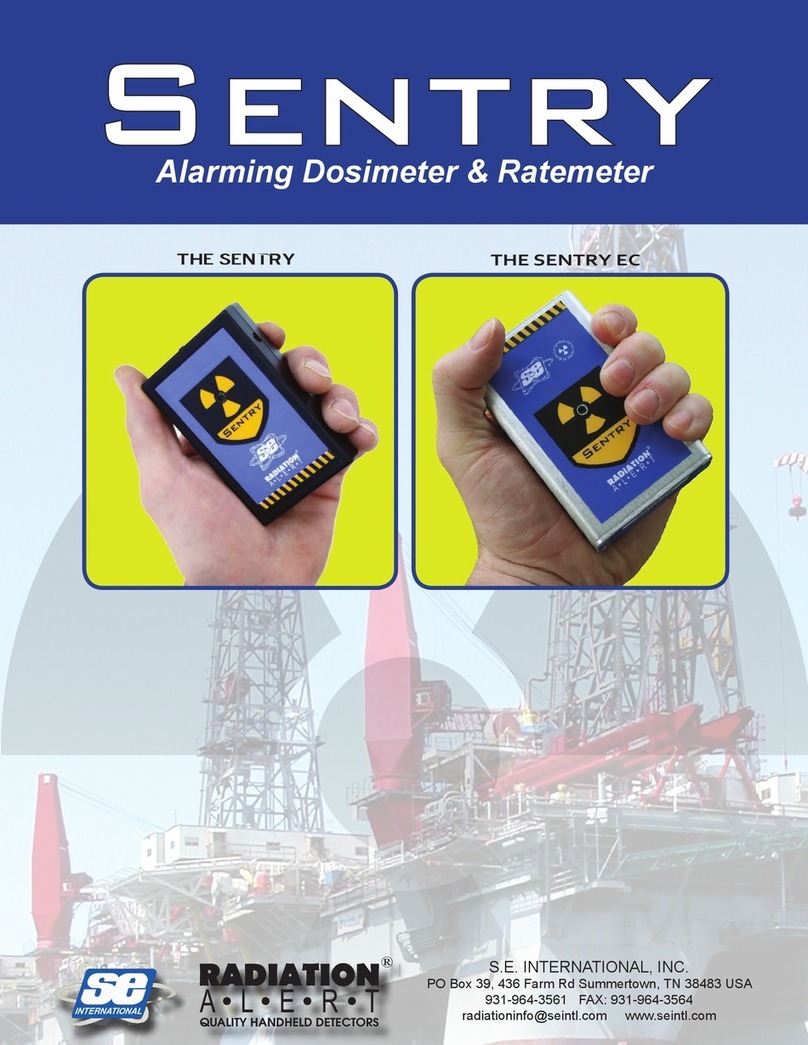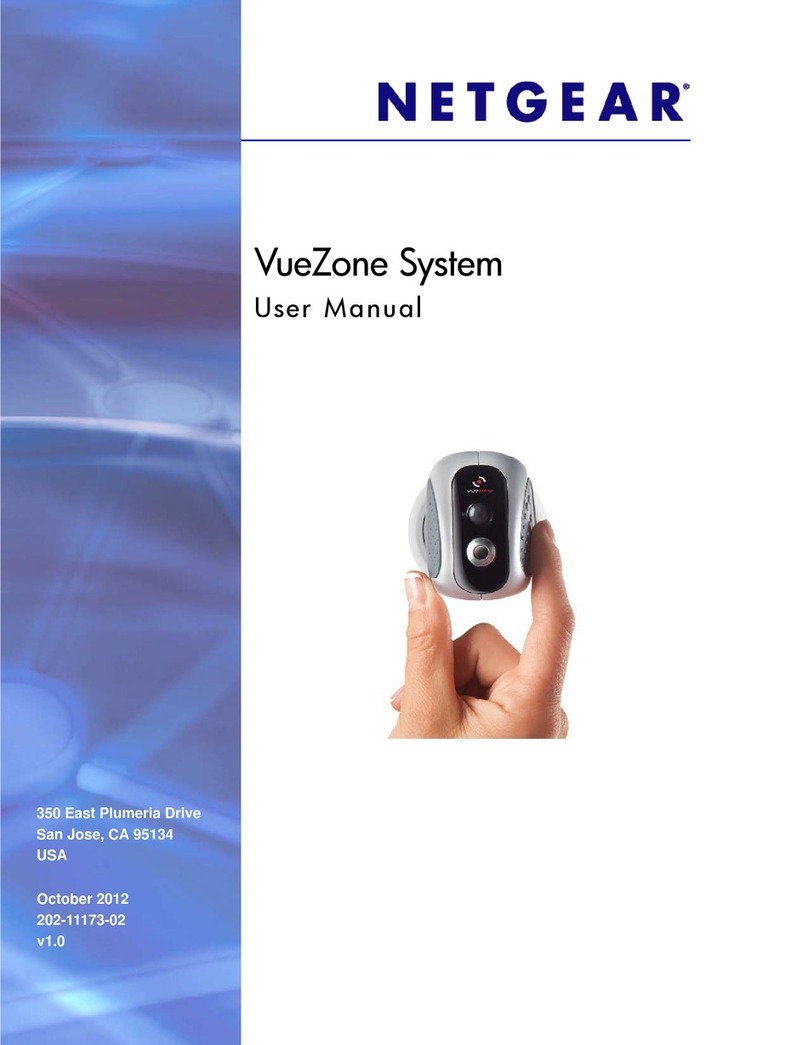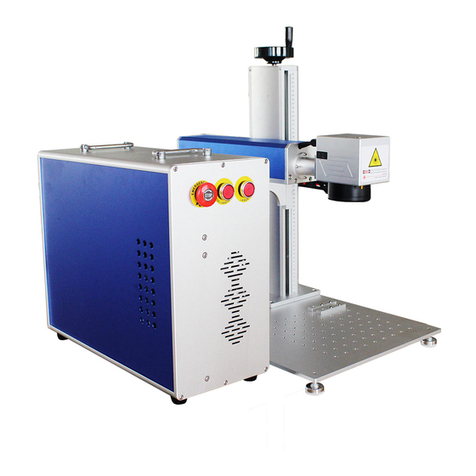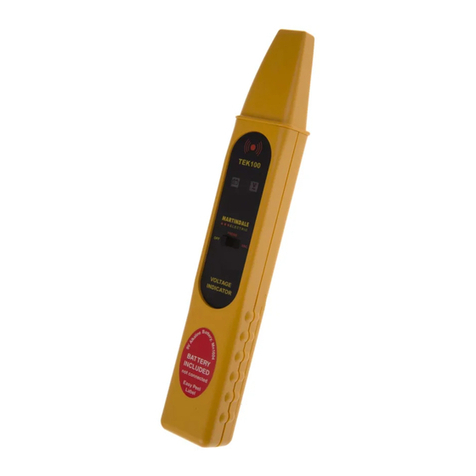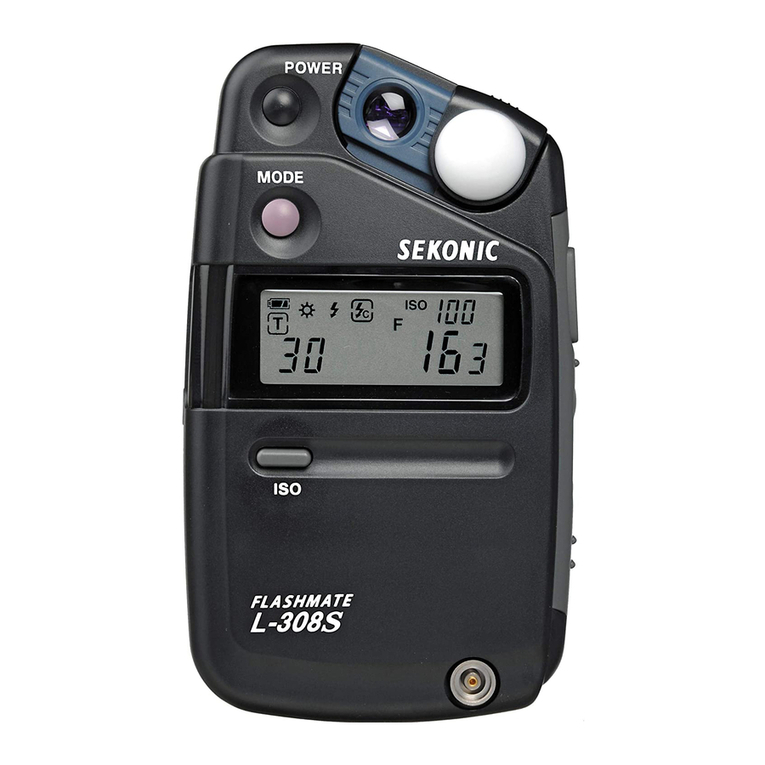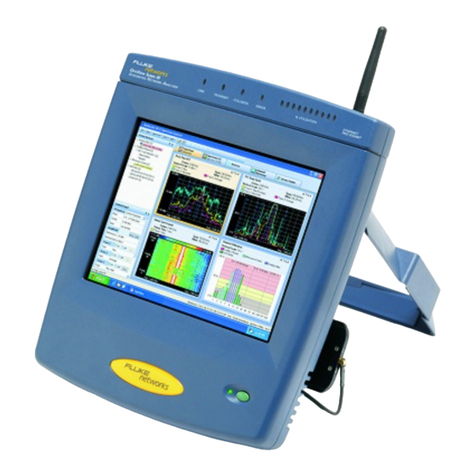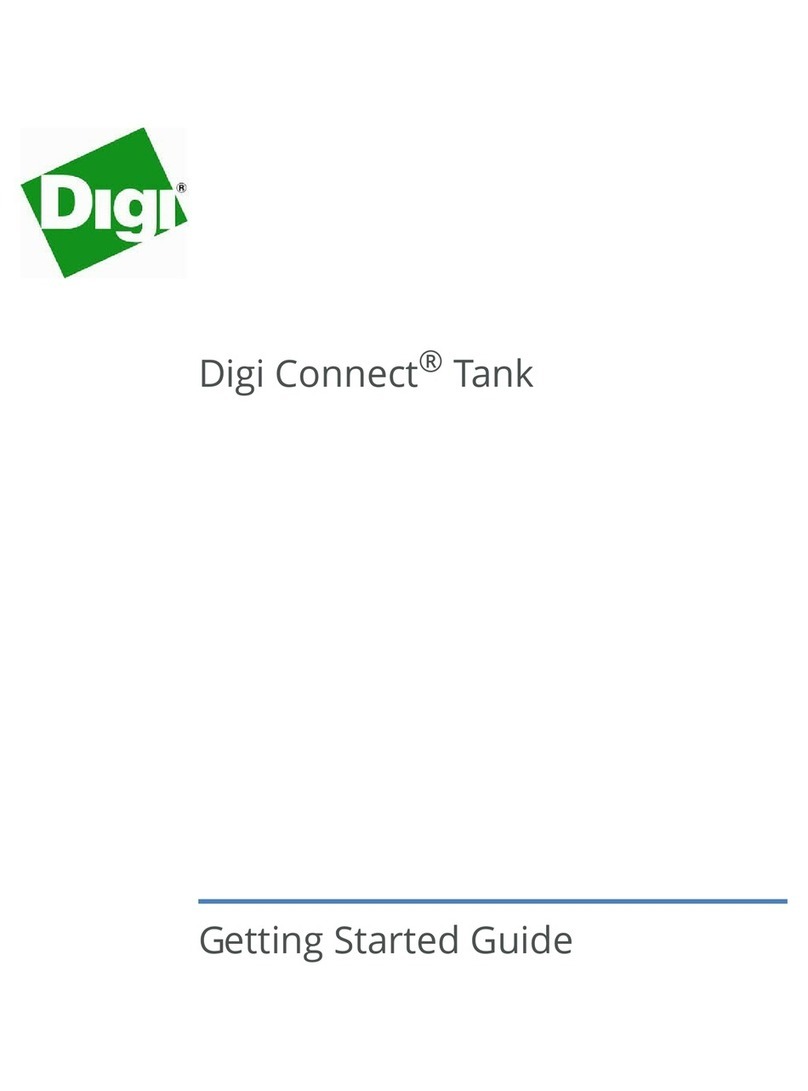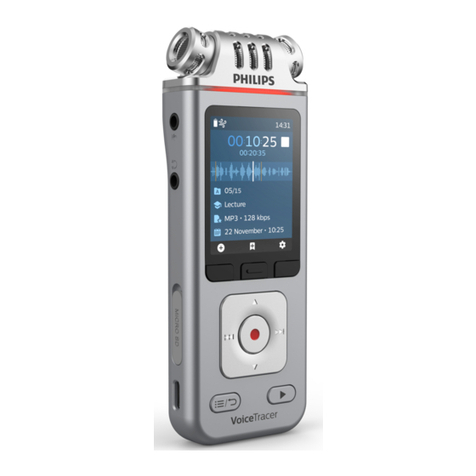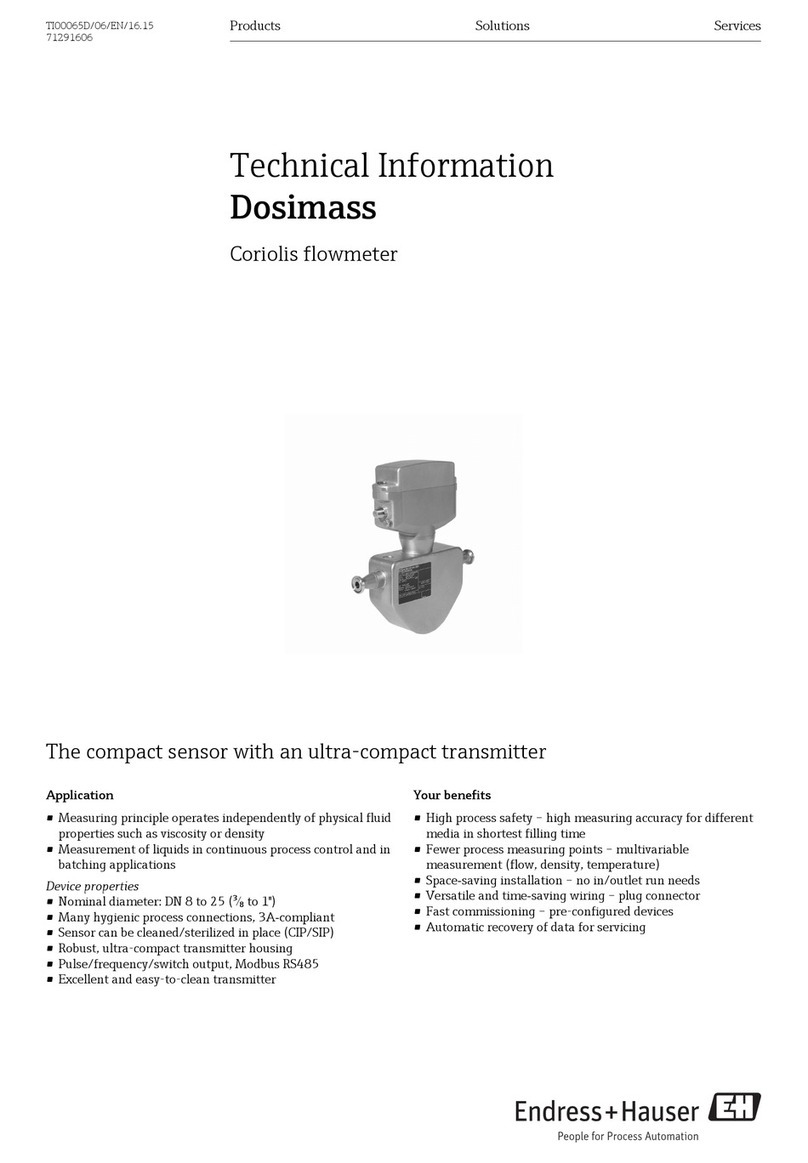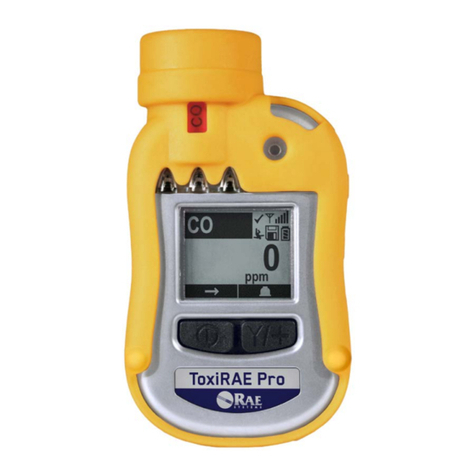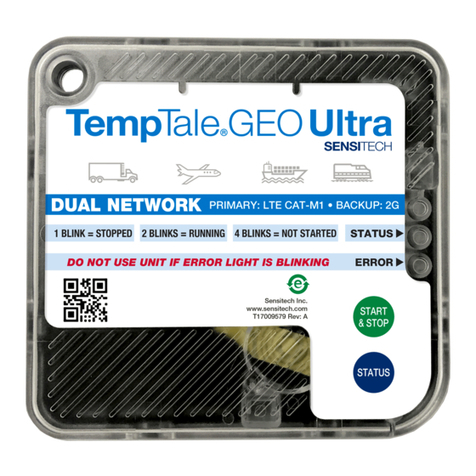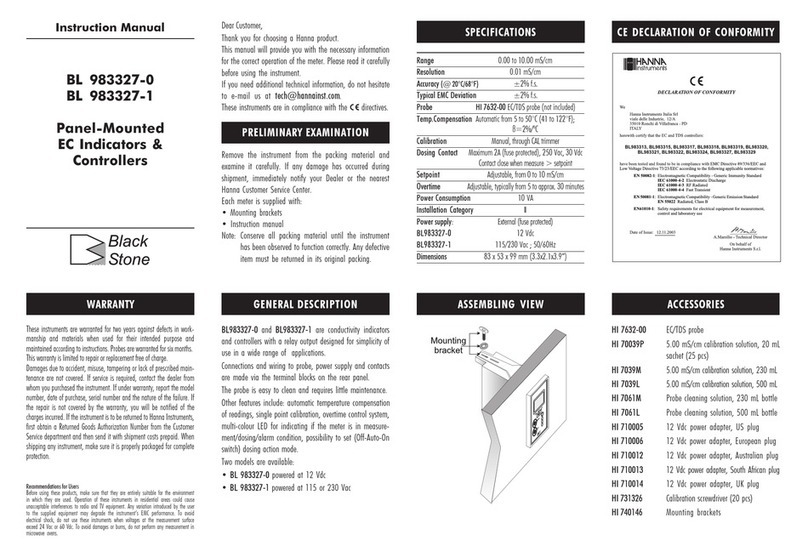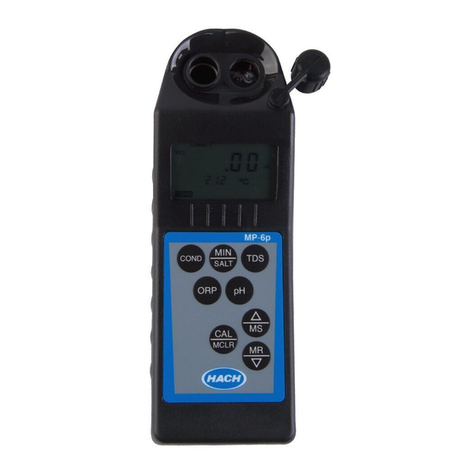SE Radiation Alert Frisker User manual

S.E. Internaonal, Inc. P.O. Box 39, 436 Farm Rd. Summertown, TN 38483 USA
1.800.293.5759 | 931.964.3561 | Fax: 1.931.964.3564
www.seintl.com | radia[email protected]om
INTERNATIONAL
®
Radiation Alert®
Frisker

2
Contents
Chapter 1: Introducon 3
How The Radiaon Alert® Frisker Detects Radiaon 3
Precauons 3
The Radiaon Alert® Frisker 4
Chapter 2: General Operaon 5
Starng the Radiaon Alert® Frisker 5
Units of Measurement 5
Maximum Level 5
Response Time (Auto-Averaging) 5
The Alarm 5
Triggering the Alarm 5
Chapter 3: Calibraon 6
Calibrang The Radiaon Alert® Frisker 6
Seng the Dead Time 6
Seng the Gamma Sensivity 6
Chapter 4: Using the Radiaon Alert® Frisker 7
Checking for Surface Contaminaon 7
Chapter 5: Maintenance 8
Calibraon 8
General Maintenance Tips 8
Chapter 6: Troubleshoong 9
Chapter 7: Taking Basic Measurements 10
How to Detect Background Radiaon 10
How to Survey a Surface 10
How to perform a General Survey 10
How to determine Alpha, Beta, or Gamma Source 11
Chapter 8: Unit Conversions 12
Chapter 9: Glossary of Terms 13
Appendix A: Technical Specicaons 14
Appendix B: Limited Warranty 15

3
Chapter 1: Introducon
The Radiaon Alert® Frisker is a radiaon contaminaon instrument that has been designed and developed
to meet the demands of today’s radiaon responder. By integrang the latest electronics with a proven and
dependable Geiger-Mueller detector, the result is an ergonomic tool that addresses any number of radiological
applicaons.
How The Radiaon Alert® Frisker Detects Radiaon
The Radiaon Alert® Frisker uses a Geiger-Mueller tube to detect radiaon. The Geiger tube generates a
pulse of electrical current each me radiaon passes through the halogen quenched tube. Each pulse is
electronically detected and registers as a count. The Radiaon Alert® Frisker displays the counts in the mode
you choose.
The number of counts detected by the Radiaon Alert® Frisker varies from moment to moment due to the
random nature of radioacvity. A reading is expressed more accurately as an average over me, and the
average is more accurate over a longer me period.
Precauons
To keep the Radiaon Alert® Frisker in good condion, handle it with care, and observe the following
precauons:
• CAUTION: Never touch the Radiaon Alert® Frisker to a surface that may be contaminated. You may
contaminate the instrument.
• Do not leave the Radiaon Alert® Frisker in temperatures over 100° F (38° C) or in direct sunlight for
extended periods of me.
• Do not get the Radiaon Alert® Frisker wet. Water can damage the circuitry and the mica surface of the
Geiger tube.
• Do not put the Radiaon Alert® Frisker in a microwave oven. It cannot measure microwaves, and you may
damage it or the oven.
• This instrument may be sensive to and may not operate properly in radio frequency, microwave,
electrostac, and electromagnec elds.
• If you do not expect to use the Radiaon Alert® Frisker for longer than one month, remove the baeries
to avoid damage from baery corrosion.
• CAUTION: When using the unit at altudes higher than 8000 feet (2438.4 meters), it is possible that the
tube window can rupture.

4
The Radiaon Alert® Frisker
CAUTION: The mica surface of the Geiger tube is fragile and should be handled with care. Be careful not to let
anything penetrate the screen.
The Radiaon Alert® Frisker uses a 2-inch, thin window Geiger tube, commonly called a “pancake tube.” The
screen on the back of the Radiaon Alert® Frisker is called the GM Window Figure 1(1). It allows alpha and
low-energy beta and gamma radiaon, which cannot get through the plasc case, to penetrate the mica
surface of the tube. The small radiaon symbol on the side of the enclosure indicates the center of the Geiger
tube
GM Window
Power Switch
LCD Display
Mode
Buon
Baery
Compartment
Backlight
Buon
Baery
Compartment
Figure 1 (1).
Radiaon
Symbol

5
Starng the Radiaon Alert® Frisker
Before starng the Radiaon Alert® Frisker, install 2 standard AA alkaline baeries in the baery compartment
located in the lower rear of the handle (Figure 1(1)).
To start the Radiaon Alert® Frisker, set the power switch to On (I) or Audio (A). The Radiaon Alert® Frisker
will then beep and begins a 6-second system check. SEI Frisker, the serial number of the unit, and the
rmware version are displayed. Aer the system check, the radiaon level is displayed in the selected mode.
Approximately 30 seconds aer you start the Radiaon Alert® Frisker, a short beep indicates that enough
informaon has been collected to ensure stascal validity.
Units of Measurement
The Radiaon Alert® Frisker is designed for use of convenonal units; microroentgens per hour (µR/hr),
milliroentgens per hour (mR/h), counts per minute (CPM), nanosieverts per hour (nSv/h), microsieverts per
hour (µSv/h), and counts per second (CPS). To switch between units of measure, push the MODE buon,
located to the right under the LCD display. (Figure 1(1))
Maximum level
Though the Frisker is only calibrated to 50mR/hr, it will detect levels much higher than that. The maximum
value to make it over range is related to the dead me and the sensivity. Typically, the dead me is about
40 µseconds (1/4E-5) and the sensivity is around 3600 cpm/mR/hr (60cps/mR/hr). With these sengs, the
Frisker will over range at (1/4E-5)/60 = 417 mR/h.
When the maximum level for the current mode is reached, the Radiaon Alert® Frisker beeps for 3 seconds,
pauses for 3 seconds, and repeats that paern. Also, the ALARM icon is displayed and the numerical values
displayed will show 0000 instead of the specic rate. The beeping paern will connue unl the level
decreases or the Radiaon Alert® Frisker is turned o.
Response Time (Autoaveraging)
When the radiaon level is less than 6,000 CPM, the reading in any of the dose rate modes is based on the
radiaon detected in the previous 30 seconds. In order to give a quicker response to changes, when the
radiaon level exceeds 6,000 CPM in any 30 second period, the reading is based on the previous 6 seconds.
Chapter 2: General Operaon
Aer 30 second start-up The reading will be based
if instrument is detecng on an average of the previous
(<100 CPS) 30 seconds
<6000 CPM or <1.75 mR/hr
(100 -200 CPS) 6 seconds
6000-12,000 CPM or 1.75-3.6 mR/hr

6
Calibrang the Radiaon Alert® Frisker
Before calibrang the Radiaon Alert® Frisker, install 2 fresh standard AA alkaline baeries in the baery
compartment located in the lower rear of the handle (Figure 1(1)).
Seng the Dead Time
To enter the menu to set the dead me of your detector, hold down the mode buon while powering on the
instrument. Hold down the mode buon unl the “Set Recip DT” screen appears.
Use the backlight buon as a “+” buon to increase the set dead me level. Use the mode buon as a “-”
buon to lower the set dead me level. Once you have selected your desired dead me level, press both the
backlight and mode buons at the same me to exit the dead me set menu and resume normal operaon of
the Radiaon Alert® Frisker.
Seng the Gamma Sensivity
To enter the menu to set the gamma sensivity of your detector, hold down the mode buon while powering
on the instrument. Hold down the mode buon unl the set gamma sensivity screen appears.
Use the backlight buon as a “+” buon to increase the set gamma sensivity level. Use the mode buon as
a “-” buon to lower the set gamma sensivity level. Once you have selected your desired gamma sensivity
level, press both the backlight and mode buons at the same me to exit the gamma sensivity set menu and
resume normal operaon of the Radiaon Alert® Frisker.
Chapter 3: Calibraon
Seng the Alarm Level
To set the alarm level on the Radiaon Alert® Frisker, hold down the backlight buon for 3 seconds to enter
into the alarm set screen. The units of measure for the alarm will be displayed as the same unit of measure
you have chosen for the operaon of the unit. Use the backlight buon as a “+” buon to increase the set
alarm level. Use the mode buon as a “-” buon to lower the set alarm level. Once you have selected your
desired alarm level, press both the backlight and mode buons at the same me to exit the alarm set menu
and resume normal operaon of the Radiaon Alert® Frisker.
Triggering the Alarm
When the set alarm level is reached, the unit will alarm and the display will show the word “ALARM” at the
boom.

7
Chapter 4: Using the Radiaon Alert® Frisker
Checking for Surface Contaminaon
To check a surface, hold the detector window close to the surface (1 cm - 1 in), and read the count rate. Be
careful not to touch the Frisker to any potenally contaminated surfaces to prevent contaminang the unit.
Move the Frisker over the surface in a grid formaon at a speed of about 1 inch every 1-2 seconds.

8
The Radiaon Alert® Frisker requires regular calibraon and careful handling to assure good measurements.
Use the following guidelines to maintain the instrument properly.
Calibraon
We recommend that the Radiaon Alert® Frisker be calibrated annually, or as oen as your regulaons require.
The best way to calibrate is using a calibrated source at a calibraon lab.
The Radiaon Alert® Frisker is calibrated to Cs-137 by default. A cered calibraon source should be used.
To calibrate the Radiaon Alert® Frisker for another radionuclide, use a calibrated source for that radionuclide
or the appropriate conversion factor referenced to Cs-137. CAUTION: Errors can occur when using low level
sources or background for calibraon.
If you would like more informaon about source calibraons, please contact us at 1.800.293.5759 or go to
seintl.com/services.
General Maintenance Tips
1. Do not get the instrument wet.
2. Be sure to store the meter in a locaon without direct sunlight, as sunlight can damage the end window
of the detector over me.
3. Be sure to store the unit inside the carrying case when not in use.
4. If you are planning to store the unit for a long me, remove the baeries to avoid damage from baery
corrosion.
5. Do not place the unit inside a microwave oven as it can damage the unit and/or the microwave. This
instrument is for detecng ionizing radiaon such as alpha, beta, gamma, and x-rays. It will not detect
non-ionizing radiaon such as microwave and radio emissions.
6. Do not place any objects that may puncture the mica end window of the detector near the detector.
Chapter 5: Maintenance

9
The Radiaon Alert® Frisker is a highly reliable instrument. If it does not seem to be working properly, look
through the following chart to see if you can idenfy the problem.
Chapter 6: Troubleshoong
Problem Possible Cause Acon
Display works, but no counts
are registered
defecve Geiger tube Look through the window to check the
mica surface of the tube; if it is wrin-
kled or a break is visible, replace it
Reading is high, but another
instrument has a normal read-
ing in the same locaon
possible contaminaon Scan the Frisker with another
instrument.
Instrument has false high
reading
moisture The circuit board may be wet. Dry the
instrument in a warm dry place; if it
sll has a problem, it requires service
Instrument has false high
reading
photosensivity Remove from direct sunlight and
ultraviolet sources. If the high count
drops, the mica window coang may
have washed o the Geiger tube due
to geng wet. The tube will need to be
replaced
connuous discharge Replace the Geiger tube
electromagnec eld Move the instrument away from pos-
sible sources of electromagnec or
radio frequency radiaon.
Display is blank no baery, dead baery, poor
baery connecon, defecve
LCD
install a new AA Baterries If count light
and audio work, the LCD may need to
be replaced.

10
Chapter 7: Taking Measurements
The Radiaon Alert® Frisker will not detect neutron, microwave, RF (radio frequency), laser, infrared,
or ultraviolet radiaon. All of our instruments are most accurate for Cesium-137 and isotopes of similar
energies. Some isotopes detected relavely well by most Geiger counters are Cobalt-60, Technicium-99M,
Phosphorous-32, Stronum-90, and many forms of Radium, Plutonium, Uranium, and Thorium.
Some forms of radiaon are very dicult or impossible for a Geiger tube to detect. Trium, for example, is
a by-product of a nuclear reactor and is used in research. The beta emissions from Trium are so weak that
there are very few instruments that are capable of detecng it. More sophiscated equipment is needed for
the measurement of environmental samples, such as radioacvity in milk, produce, soil, etc., unless you are
looking for gross contaminaon.
The radiaon from some isotopes can cause a Geiger tube to overexcite and indicate a higher level of radiaon
than is actually present. Americium 241 is an example of this phenomenon. Americium 241 is used in some
smoke detectors and many dierent types of industrial density and ow meters.
Unless you know exactly what you are measuring and understand the limitaons of detecon instruments,
it is possible to draw misleading conclusions from your readings. We design our instruments to detect the
broadest range of ionizing radiaon possible and sll be aordable. The full spectrum of ionizing radiaon
cannot be measured by one single instrument. Everyone agrees that radioacve materials can be dangerous.
We encourage you to seek out other sources of informaon.
How to Detect Background Radiaon
To see what the background radiaon is in your area, simply turn the instrument on and, aer the 30 second
start up beep, the general background radiaon will be displayed.
How To Survey a Surface
When surveying a surface, such as a counter top, you will need to hold the Radiaon Alert® Frisker about 1-2
cenmeters from the surface while moving the unit horizontally across the survey area at a rate of 50 cm per
second.
How to Perform a General Survey
A general survey may be used to nd a potenal source. For example, if you are looking for a potenal source
in a pile of scrap, the Radiaon Alert® Frisker will typically detect about 2 feet into a pile. To nd the source,
slowly move the Radiaon Alert® Frisker in the direcon of the higher readings or clicks unl the potenal
source is found.6

11
Geiger counters can detect the four main types of ionizing radiaon: alpha, beta, gamma, and x-rays. Some
detect only gamma and x-rays. Our instruments are calibrated to Cesium 137, but also serve as excellent
indicators for many other sources of ionizing radiaon. Gamma and x-rays are measured in milliroentgens per
hour (mR/hr), microsieverts (µSv/hr), or millisieverts (mSv/hr). Alpha and beta are measured in counts per
minute (CPM) or counts per second (CPS).
The window of the GM tube is very thin mica. This mica window is protected by a screen. Some levels of alpha,
low energy beta, gamma, and x-rays that cannot penetrate the plasc case or the side of the tube can be
sensed through the window.
Try not to touch the instrument to any suspected radioacve substance.
Although some beta and most gamma radiaon can go through protecve gear, try to avoid skin contaminaon
and ingeson. When you leave a radioacve area, remove any protecve outerwear and dispose of it properly.
If you think you have been contaminated, as an addional precauon, shower and consult a physician.
How to Determine Alpha, Beta, or Gamma source.
To determine whether the radiaon detected is alpha, beta, or gamma, hold the instrument toward the source.
Alpha: If there is no indicaon through the back of the case (the side of the tube), posion the window close
to but not touching the source. If there is an indicaon, it is alpha, beta, or low energy gamma. If a sheet of
paper placed between the window and the source stops the indicaon, it is most likely alpha. To avoid parcles
falling into the instrument, do not hold the source above the window.
Beta: Place a piece of aluminum about 1/8 inch (3 mm) thick between the instrument and the source. If the
indicaon stops, decreases, or changes, it is most likely beta radiaon. Most common isotopes emit both beta
and gamma radiaon. This is why the indicaon would decrease or change but not stop.
The non-occupaonal dose limits set by the government is 100 mR above background annually.
It is up to the individual to decide what a safe radiaon level is. It will be dierent depending on the
individual and their knowledge of radiaon and its aects. Radiaon levels will vary according to locaon and
circumstances. As an example; if your background level is 25 CPM (counts per minute) where you live, when
you y in an airplane at 30,000 feet your rate meter may measure 200 CPM (.2 mR) for 2 to 5 hours. That is 8
mes your normal background radiaon on the ground, but it is only for a limited amount of me.
When measuring radiaon in an emergency response situaon, it is good to have something to compare your
readings to. Taking a background radiaon level reading in your area before a radiaon event will help you
determine if you have an elevated level of radiaon and whether or not to stay in that locaon. Background
radiaon is naturally occurring radiaon that is always present. It includes high energy gamma rays from the
sun and outer space and alpha, beta, gamma radiaon emied from elements in the earth. Using a rate meter,
you can determine your normal background radiaon levels.
Gamma and X-Rays: If there is an indicaon of radioacvity, it is most likely gamma or high energy beta. Low
energy gamma and x-rays (10-40 keV) cannot penetrate the side of the GM tube, but may be detected through
the window.
If you perform the alpha/beta test above and there is no change or only a very slight change in the indicaon,
the source is eming primarily gamma radiaon.

12
Radiaon Measurement Units
Several dierent units are used to measure radiaon, exposure and dosage.
Roentgen is the amount of X-radiaon or gamma radiaon that produces one electrostac unit of charge in
one cc of dry air at 0° C and 760 mm of mercury atmospheric pressure. One thousand milliroentgen (1,000
mR)= 1R. The Radiaon Alert® Frisker displays in milliroentgens per hour (mR/hr).
Rad is the unit of exposure to ionizing radiaon equal to an energy of 100 ergs per gram of irradiated material.
This is approximately equal to 1.07 roentgen.
Rem is the dosage received from exposure to a rad. It is the number of rads mulplied by the quality factor of
the parcular source of radiaon. The rem and millirem are the most commonly-used measurement units of
radiaon dose in the U.S. 1 rem= 1 rad.
Sievert is the standard internaonal measurement of dose. One sievert is equivalent to one hundred rems. A
microsievert (μSv) is one millionth of a sievert. A unit of dose equivalent. 1 Sv= 100 roentgens, 10 µSv/hr = 1
milliroentgen/hr.
Curie is the amount of radioacve material that decays at the rate of 37 billion disintegraons per second,
approximately the decay rate of one gram of radium. Microcuries (millionths of a curie) and picocuries
(trillionths of a curie) are also oen used as units of measurement.
Becquerel (Bq) is dened as the acvity of a quanty of radioacve material in which one nucleus decays per
second. 1 dps (one disintegraon per second).
Converng CPM to mR/hr
mR/hr = cpm
sensivity
Sensivity is expressed in cpm per mR/hr (Counts Per Minute for every milliroentgen the GM tube can detect)
referenced to Cs-137. Mathemacally the cpm units cancel each other out leaving mR/hr, as shown below.
For example, if you have collected 200 CPM with the Radiaon Alert Radiaon Alert® Frisker, which has a
typical gamma sensivity of 3600 cpm per mR/hr, you would divide the 200 cpm by the 3600 cpm per mR/hr
sensivity. The cpm cancels out and you are le with 200/3600 mR/hr = 0.056 mR/hr
=
cpm
cpm
mR/hr
cpm
1
X
mR/hr
cpm = mR/hr
200 cpm
cpm
mR/hr
= 0.056 mR/hr
3600
Chapter 8: Unit Conversions

13
Background Radiaon
Naturally occurring radiaon is always present. It includes high energy gamma rays and parcles from the sun
and outer space and alpha, beta, and gamma radiaon emied from elements in the earth.
CPM (counts per minute)
The unit of measurement usually used to measure alpha and beta radiaon.
Ion
An atomic parcle, atom, or molecule that has acquired an electrical charge, either posive or negave, by
gaining or losing electrons.
Ionizaon
The process by which neutral atoms of molecules are divided into pairs of oppositely charged parcles known
as ions.
Ionizing Radiaon
Radiaon capable of producing ionizaon by breaking up atoms or molecules into charged parcles called ions.
Radiaon
The emission and propagaon of energy through space or through maer in the form of parcles or waves.
Radionuclide
The naturally occurring or arcially produced radioacve form of an element.
Decay
When an atom emits an alpha or beta parcle or a gamma ray, it becomes a dierent type of atom. Radioacve
substances may go through several stages of decay before they change into a stable, or non-ionizing, form. For
example; U-238 has 14 dierent stages of decay before it stabilizes. An element may have several forms, or
isotopes. A radioacve isotope of an element may be called a radioisotope. However, the more correct term is
radionuclide.
Half-life
Each radionuclide has a characterisc half-life, which is the me required for half of a quanty of the material
to decay.
Chapter 9: Glossary of Common Terms

14
Calibratable Operating Range
µR/hr - 1 to 50,000 CPM - 0.0 to 175,000
nSv/hr - 1 to 500,000 CPS - 0.0 to 2500
Accuracy (Cs137)
µR/hr ±10% typical (NIST), ±15% max - 0 to 50,000
nSv/hr ±10% typical (NIST), ±15% max - 1 - 500,000
CPM ±10% typical (NIST), ±15% max - 0 to 175,000
(Referenced to Cs137)
Energy Sensitivity
Detects Alpha down to 2 MeV. Detects Beta down to 0.16 MeV; typical detection eciency at 1 MeV
is approximately 25%.
Detects Gamma down to 10 KeV through the detector window. 3600 CPM/mR/hr (Cs137). Smallest
detectable level for I125 is .02 µCi at contact.
Anti-Saturation
Readout will OVERRANGE in radiation elds as high as 100 times the maximum reading.
Alert
Pulsating beeper sounds the alert. Adjustable alert levels are used for µR/hr, CPM, µSv/hr, and CPS.
Display
Backlit liquid crystal display with mode indicators.
Count Light
Red LED ashes with each count.
Audio Indicator
Internally mounted beeper
(can be switched o for silent operation)
Power Requirements
Two (2) AA alkaline batteries. Battery life is approx. 500 hours at normal background radiation levels
w/o backlight (based on 1000m/Ah batteries).
Temperature Range
-10° to +50°C (14° to 122°F)
Weight
217 g (7.7 oz.)
Size
276 x 44 x 64 mm (10.875 x 1.75 x 2.5 in.)
Includes
Carrying Case
Limited Warranty
1 year limited warranty
Appendix A: Technical Specicaons
5
4
3
2
1
0
10
1
10
2
10
3
10
4
ENERGY RESPONSE
RELATIVE
PHOTON ENERGY (keV)
COUNTRATE
End Window
Side Wall

15
WARRANTOR: S.E. Internaonal, Inc., P.O. Box 39, 436 Farm Road, Summertown, TN 38483-0039, USA, (931)
964-3561
ELEMENTS OF WARRANTY: S.E. Internaonal, Inc., warrants for 90 days the included detector and for one year
all materials and crasmanship in this product to be free from all defects with only the limitaons set out
below.
WARRANTY DURATION: The warranty shall terminate and be of no further eect one year (90 days on the
detector) aer the original date of purchase of the product or at the me the product is: a) damaged or not
maintained as is reasonable or necessary, b) modied, c) repaired by someone other than the warrantor for
a defect or malfuncon covered by this Warranty, d) contaminated with radioacve materials, or e) used in a
manner or purpose for which the instrument was not intended or contrary to S.E. Internaonal, Inc.’s wrien
instrucons. This warranty does not apply to any product subjected to corrosive elements, misuse, abuse, or
neglect.
STATEMENT OF REMEDY: In the event that the product does not conform to the warranty at any me while this
warranty is eecve, the Warrantor will repair the defect and return the instrument to you prepaid, without
charge for parts or labor.
NOTE: While the product will be remedied under this warranty without charge, this warranty does not cover
or provide for the reimbursement or payment of incidental or consequenal damages arising from the use of
or the inability to use this product. The liability of the company arising out of the supplying of this instrument,
or its use, whether on warranes or otherwise, shall not in any case exceed the cost of correcng defects in
the instrument, and aer the said one year (90 days on the tube) period all such liability shall terminate. Any
implied warranty is limited to the duraon of the wrien warranty.
PROCEDURE FOR OBTAINING PERFORMANCE OF WARRANTY: In the event that the product does not conform
to this warranty, please write or call to the address above. S.E. Internaonal, Inc. will not accept contaminated
instruments for calibraon or repair under warranty or otherwise.
NOTE: Before using this instrument, the user must determine the suitability of the product for his or her
intended use.
Appendix B: Limited Warranty

16
Or ll out the form online at
http://seintl.com/calibrations/
NAME MODEL NAME
COMPANY SERIAL NUMBER
ADDRESS
CITY
STATE, ZIP, & COUNTRY PHONE NUMBER
Please ll out this form and send it back to us if you would like to be
noed of the NIST calibraon renewal for your instrument to:
S.E. International, Inc.
P.O. Box 39, 436 Farm Rd. Summertown, TN 38483
1.800.293.5759 | 931.964.3561 | Fax: 1.931.964.3564
www.seintl.com | radia[email protected]om
EMAIL
DATE PLACED IN SERVICE
Calibraon Database Applicaon
Table of contents
Other SE Measuring Instrument manuals
